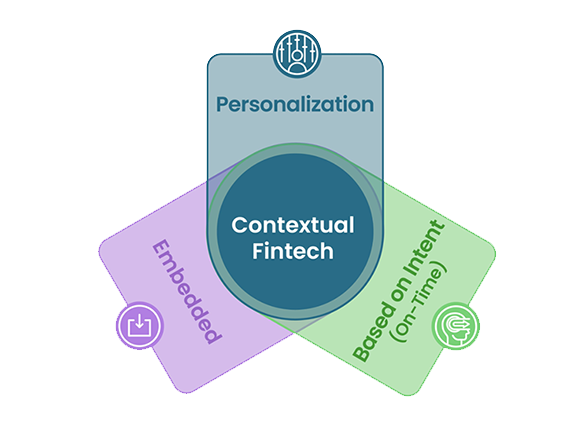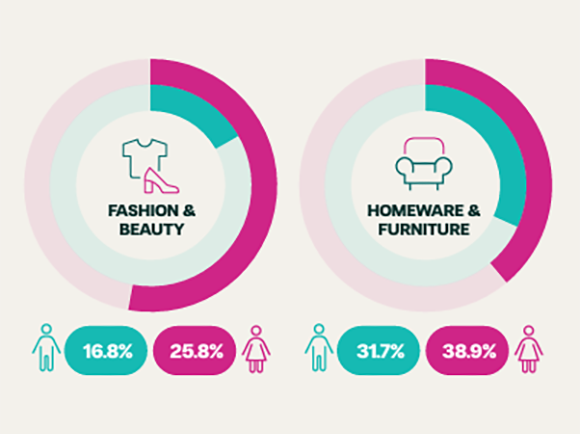The Ultimate Guide to Understanding Refunds in BNPL

Every party involved in a retail finance transaction – the merchant, the lender, and the provider – has a role to play to resolve customer issues. But it is often the case that, in sharing the responsibility between these parties, no single entity takes complete control.
Consider the case of refunds
Customers will request a refund from the merchant who sold them the product. But if the customer is still paying back a loan to the lender, the merchant may point the customer towards that lender to retrieve their money. Now the lender has to request the sum back from the merchant, in order to give the money back to the customer. The merchant, meanwhile, will not approve the refund unless they have received the item back in satisfactory condition. So the responsibility goes from the customer to the merchant, to the lender, to the customer, to the merchant, to the lender. Confusing, to say the least.
All the while, the customer is left wondering whether or not they’ll get their money back. What should have been a straightforward process has become laborious, confusing and anxiety-inducing for the customer. All the while, their trust in the merchant, the lender and perhaps even the platform provider is declining.
Because no one entity stood up to take responsibility, now every party involved in the transaction is at risk of loss of reputation.
And this is, in fact, the best case scenario. The more forthright customer may stop paying their retail finance instalments altogether whilst their refund is being processed. They might think, “well, if it isn’t the item I wanted, I’m sure as heck not going to keep paying for it while I wait for my money back.” They may not be aware that, since the lender has paid the merchant in full, they are not actually paying the merchant back – rather, they are paying off their loan from the lender. By refusing to continue their repayments, they risk incurring penalties, not least of which is an impact to their credit score.
Since no one communicated with the customer to make them aware of their rights in the event they wanted an item refunded, it is once again a lack of responsibility that has cost them.
Merchants, lenders and providers each have a role to play to avoid this situation. Because, if no one steps up and takes control, everybody stands to lose.
And refunds are but one example. Lender agreements, missed payments, debt recovery and accessing customer services are just some of the other touchpoints where a customer’s end-to-end experience may become disrupted – simply down to a lack of consistency throughout their journey.
Using this guide
In this ultimate guide to understanding refunds in retail finance, we outline procedures to ensure merchants, lenders and providers understand who is responsible when the consumer is experiencing issues. You’ll learn the correct way to deal with refunds, how to manage missed payments, how to communicate your retail finance offering responsibly, and the importance of understanding responsibility in retail finance.
Merchants and lenders can use this guide as a jumping-off point, finding useful tools to help optimise their customer journeys and prepare their after-sales support teams for this emerging set of issues.
To kick us off, let’s outline the interplay between the key players in a retail finance transaction and see who is responsible for what.
How does the BNPL market function?
There can be up to four parties involved in any one retail finance transaction. These include the consumer, the retailer, the BNPL provider, and the lender. It is often the case that the BNPL provider will also be the lender.
While “Buy Now, Pay Later” is used as a catch-all term for many types of checkout finance, there are in fact multiple models, such as:
Traditional Buy Now, Pay Later Model
Consumers purchase goods from a retailer via a Buy Now, Pay Later provider, who acts as both the platform provider and the lender.
The BNPL provider finances the purchase by paying the merchant the sum total on behalf of the consumer. The consumer, in return, pays an initial deposit and then makes repayments over an agreed short-term period.
Direct to Consumer Buy Now, Pay Later Model
Similar to the Traditional Buy Now, Pay Later Model, in that the platform provider is also the lender. However, with Direct to Consumer BNPL, providers enable instalment purchases at the checkout through applications or by using a card similar to a credit or debit card (either as a physical card or in a digital wallet).
The chain of command is easier to discern in this scenario as the customer is expected to have established a relationship with the provider prior to the point of purchase.
Again, in this model, the lender pays the merchant for the purchase, takes an initial deposit from the consumer, and splits the rest of the payments over an agreed period.
Whitelabel Retail Finance
From the consumer’s perspective, the Whitelabel Retail Finance platform is no different to a Traditional journey, in that the customer purchases goods from a retailer and pays by taking out a loan from a third-party retail finance lender.
However, what they won’t see is that the journey is facilitated by a retail finance provider who acts as an intermediary, connecting the consumer with a lender via a whitelabel platform, which often shows the branding of the retailer.
The journey may therefore seem to be handled by the retailer, who hands the customer over to the lender – whereas, in fact, the whole thing may be facilitated by an unnamed third party.
Where do the issues lie?
Once a sale is made, the merchant, lender and provider will all have varying degrees of after-sales support. One party may assume that another will take charge of a dispute, unless responsibility is clearly identified and communicated at the outset of a partnership.
A misunderstanding at this juncture is at the cost of the consumer, which in turn may tarnish the reputations, trust and brands of those involved in providing retail finance. It is therefore crucial for the sustainability of the sector that issues are resolved before they arise.
Let’s return to the issue around refunds to highlight a general standard of best practice that may be applied to other, perhaps yet unforeseen issues with responsibility in retail finance.
Issues with refunds – Retail Finance
Using one retail finance loan, consumers can purchase multiple products. If even one of their items does not fit their expectations, the consumer is within their rights to request a refund from the merchant.
From the consumer’s perspective, they want to simply return the item and get the money back into their bank account. But as we have already seen, this can lead to frustration if the correct systems are not in place to take ownership of complaints.
Consumers will look to the party (merchant, lender, or provider) that they feel is responsible if their refund is not processed correctly. Merchants, lenders and providers must therefore all know where to direct a consumer if they are contacted. This means having an established set of procedures with appropriate signposting to communicate the chain of command to the consumer.
What is the correct procedure?
If a consumer has requested a refund, the merchant must contact the lender at the earliest instance.
Since the consumer has borrowed funds from the lender, the merchant must negotiate an exchange with the lender. The merchant should transfer the sum of refund to the lender on the proviso that this sum will be immediately deducted from the consumer’s total loan amount.
If the merchant has issued the refund and followed these steps, but the lender has not yet refunded the consumer, the merchant should get back in touch with the lender to follow up on the request. Any correspondence should be communicated to the consumer at the earliest instance.
In many cases it may not be possible for the merchant to contact the lender. This is usually due to the capacity of the merchant’s customer service team and thus the after-sales support provided, which varies between companies. In this scenario, the merchant must instruct the consumer to contact the lender with all of the information needed to resolve the matter. This should be done timely and sensitively to avoid conflict as the consumer may begin to feel frustrated with the process.
Should the lender regularly encounter bottlenecks in dealing with merchant refunds, it may be endemic upon them to install a digital system designed to streamline refunds.
Ultimately, it is crucial that all parties work for the consumer, to ensure they have all the information needed at the critical moments in the journey. Details such as the name and contact details of the lender, the agreement number, date of purchase and value of transaction will be helpful and should be provided in a timely manner. The customer should be given clear signposting to the most suitable party to deal with at each stage.
Waterfall lending
In some situations, the lender may be unaware that the consumer used finance to pay for their products. This can happen if a platform finance provider connects the consumer with multiple lenders, which is known as ‘waterfall lending.’ In this scenario, the merchant should instruct the consumer to find the lender’s details in correspondence sent by the lender – ideally emails.
If the consumer cannot find this information, the merchant must contact the provider with the name of the merchant and consumer, date of the transaction, and size of purchase. The provider will be able to locate the agreement and then provide the lender details to the merchant, who can in-turn pass this information onto the consumer. The consumer should then contact the lender to resolve the query.
What about issues with the agreement?
Similar steps can also be taken if there are issues with the agreement. Perhaps too many instalments have been paid, or the account is still showing as active on a consumer’s credit file after a refund has been processed. It then becomes the lender’s responsibility to resolve the issue.
It is likely that platform providers, if they are also the lender, will be contacted directly. Lender-providers allow consumers to purchase through their own applications, with a provider backed card, or feature their logo at the retailer’s checkout. Consumers in this scenario are likely to understand that the agreement is with the lender-provider, and will therefore see the lender-provider as the relationship owner.
Merchants, however, still play a role in this purchase and may therefore still be contacted. It’s important that merchant after-sales teams are aware of the information the lender will need to assist with the issue, and that they have a direct point of contact on the lender’s side to whom they can relay disputes. Again, merchants should work with the consumer to help them collect the information needed to contact the consumer.
Managing Missed Payments
There will also be occasions when payments are missed. This could happen for a variety of reasons. Perhaps there is an issue with the goods received (or not received), the consumer has requested a refund that has not been granted, the refund has not been communicated to the lender by the merchant, or the lender may have all the information but has not processed the refund internally. Consumers may have also been under financial stress and struggling to afford their repayments.
Failing to pay a retail finance instalment can result in late fees, loss of points from one’s credit score, and eventually having the loan passed over to a debt collection agency, which incurs extra fees.
While the penalties affect the consumer, the responsibility to resolve the situation falls on the lender. It is, however, important that all parties involved are aware of the correct procedure to avoid causing additional stress to the consumer.
What is the correct procedure?
Communication is key to fixing this issue. Much of this will be standard protocol for experienced collection teams but it is nonetheless worth stating.
Lenders chasing missed repayments must do so sensitively and without judgement, particularly as the issue could be a result of a communication breakdown between the merchant, provider and lender. It may sound obvious, but they should always attempt to open a conversation at the earliest instance to explore why a payment has been missed, and to resolve the situation without resorting to extreme measures.
If the consumer has stopped paying because of an issue with a refund, investigate the issue. Work with them to find out where there may have been a breakdown in communication, or perhaps inform them of their duty to repay if a refund has not been processed or a dispute has been raised. Lenders have the power to put the account on hold if it’s an internal issue or an issue with another party.
There may be some cases wherein a disgruntled consumer tells the merchant they are not going to pay for the product. Merchants must make it clear to the consumer that they are liable for the instalments until the agreement is ended, and that missing a payment is likely to result in late fees, a default on their credit score, and perhaps collections.
Any issues with repayment must be communicated to the lender at the earliest instance. Merchants should instruct their consumers to do so if they find this to be the case.
It can be tempting to escalate the issue, but applying late fees, reporting defaults to credit reference agencies, and passing accounts on to debt collectors should always be a last resort.
Collections agencies must be well vetted and equally understanding of the circumstances. Avoid predatory companies as these will have an impact on your relationship with the customer and could impact your brand.
How to communicate these steps
Terms and conditions are a great starting point for communicating which party is responsible for which scenario, but they’re not enough. Consumers rarely read the fine print and pointing a frustrated customer towards them is likely to make the situation worse.
Merchants should instead focus their energy on making the information readily available before it is needed. FAQs are a great way to provide information without disrupting the customer journey. Ensure these are visible before the agreement is signed – preferably underneath the retail finance option, on a separate webpage or via a printed leaflet. This gives the consumer a point of reference they can easily refer back to when they need it.
It is also worth including this information in correspondence from the lender. Emails and contractual information should make it clear that agreement is with the lender and not the merchant. Signposting here can inform the customer so they know to contact the lender if there are issues with the agreement.
Prevention, after all, is preferable to cure.
What have you got to lose?
Each party involved in the process of providing retail finance stands to lose if a consumer’s issues are not handled correctly. Chief among these is loss of reputation and brand damage.
Should an issue escalate, the consumer may blame the retailer, asking: “Why would they recommend me Buy Now, Pay Later when it’s clearly not safe?” or “Why didn’t they warn me about everything that could go wrong?” Worse still are the occasions when a consumer may not have been aware about the hand-over between the merchant and the lender, thus leading them to think: “I thought I was paying back the merchant directly!”
Or, the consumer may blame the lender, telling themselves: “Typical predatory lending behaviour! I bet they wanted things to go wrong so they could make more money from me.” (Or something along those lines.) For lenders who depend on the cross-marketing opportunities available through their retail finance programme, an upset consumer could scupper their best-made plans.
Neither will the platform provider get away with it. As the entity that facilitated the whole affair, they may be looked on with equal contempt. Whether a consumer chooses a different platform in the future, or avoids using Buy Now, Pay Later altogether, the platform provider could miss out on future business.
Therefore, all parties have a vested interest in working together to ensure their consumers receive the help, support and reassurance they need, at the moment they need it.
As we have seen with refunds, the relationship owner is not always the one who can resolve the problem. Merchants, for example, have no control over the collections process if payments have been consistently missed. Yet an insensitive, aggressive or predatory procedure will do as much harm to the merchant’s relationship with their customer as if they were the ones in charge of recovering the funds.
Similarly, a poorly defined procedure to resolve issues will reflect badly on all parties involved. Merchants may point to lenders to resolve an issue, and lenders to merchants. The reality will be one or the other, though the reputation of any company the consumer gets an unsatisfactory response from will suffer.
It is therefore crucial that merchants, lenders and providers communicate their responsibility, at first to one another, then to their customers, and do everything in their power to guide the consumer along a seamless, secure and friendly journey towards a resolution.
Conclusion
Consumers look for a quick problem-fix when issues arise with a retail finance transaction. Merchants, lenders and providers with unestablished procedures can create confusion, frustration, and anger to the consumer if each party’s responsibility is unclear, and will ultimately impact customer relationships.
A clear set of procedures must therefore be established to mitigate reputational damage to all parties involved. These procedures must then be signposted for consumers to see before they need them. Terms and conditions are a starting point, but FAQs and email correspondence create an extra layer of protection for all involved.
Merchants, lenders and providers must be forthcoming in their support to consumers if they are contacted for an issue that they cannot directly resolve. This means after-sales teams must fully understand the procedures in place, and do what they can to assist consumers in gathering the information they need to resolve their query. Failing to do so could impact the grand and the consumer’s willingness to pay.
The power to protect customers in retail finance is in the hands of those that provide it.
If you have an agreement that was facilitated by the Divido platform
- Contact your lender. You can find out who your lender is by looking at the information provided in your loan agreement. Information about your loan agreement will be provided in the pre-contractual information, the contract, and any correspondence regarding your agreement. It is important to keep this information safe should you need to get in contact with your lender in the future. Disputes with your loan agreement can only be resolved with your lender. The lender holds your personal data and will be able to assist you with the specific queries regarding your agreement. Make sure you have the agreement number, date of purchase, and any other information that will help to locate your agreement. If you are struggling to find out who your lender is, proceed to step two.
- Contact the merchant. The retailer you purchased the item from should be able to help you if it is unclear who your lender is. Merchants will be able to guide you through this process. If you cannot locate your information via the merchant, proceed to step three.
- Contact Divido. Divido will be able to assist you in finding information about your loan agreement if you are struggling to locate your loan agreement. Reach out to us here.
A sustainable Buy Now, Pay Later strategy starts with building trust at the checkout. Download our new whitepaper for research-backed tips to help you communicate your proposition.
You might also
be interested in
Keen to know more?








